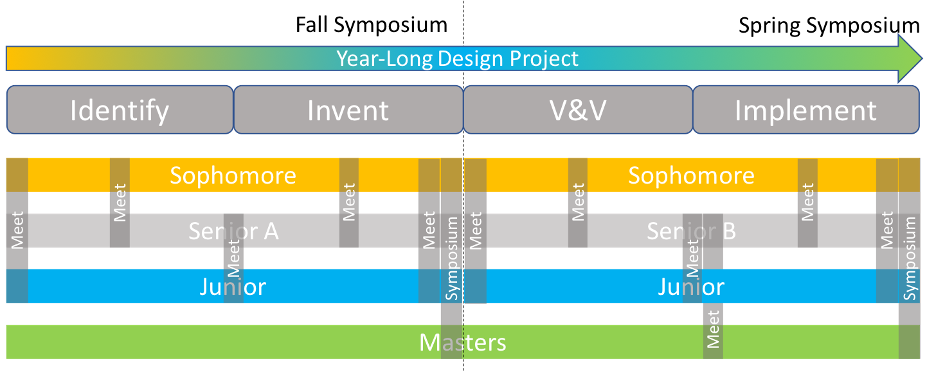Design Program
The Vision for the Design Program in the Joint Department of Biomedical Engineering is to prepare our students to identify and engineer innovative solutions for evolving healthcare needs by leading the advancement of design practice and education.
Flexible Curriculum
The JBME design program curriculum features a vertically-integrated, modular design sequence that provides students the opportunity to see the design process from problem identification through prototype while building their own customized set of technical and professional skills.
Coursework
The JBME Design Program contains a total of four (4) semesters of design work totaling 10 credit hours for the undergraduate curriculum:
Sophomore Curriculum: The sophomore curriculum is a one-semester, 2-credit course that covers the fundamentals of BME design skills. To customize their technical skills, sophomores will select three (3) technical modules to complete during the semester. These three modules will be selected from 8 possible topics that include: Bacterial Cell Culture, Mammalian Cell Culture, DNA Sequencing, CAD (required), Additive Manufacturing, Laser Cutting, Metal working & Hand Tools, and Embedded Systems. In addition to the laboratory modules, students will complete coursework that will help build proficiency with the practices of professional biomedical product development. Finally, sophomore students will complete a need finding sequence in which they will have the option to partner with a local healthcare provider to identify and define unmet medical needs.
Junior Curriculum: The Junior curriculum is a one-semester, 2-credit course that builds upon the sophomore year by covering need validation and advanced technical design. To customize their technical skills, juniors will select two (2) technical modules to complete during the semester. These two modules will be selected from 6 possible topics that include: Molding, CNC Milling, CRISPR, Bioreactor Design, Biocompatibility, and Advanced CAD. The didactic component of the Junior curriculum builds into more advanced topics of biomedical design. In addition to the laboratory and didactic components, junior design students will focus on validating needs that are identified by sophomore design students by partnering with regional and global healthcare providers.
Senior Curriculum: The senior curriculum is a two-semester, 6-credit course sequence that is an accelerated, condensed device design sequence. Students will be expected to apply the skills they have learned during their previous design experiences to engineer a solution to an unmet medical need. Didactic coursework will focus on advanced biomedical design strategy and technical engineering practice. Senior teams will select a validated unmet medical need and, throughout the two-semester sequence, work through the entire design process to validate user needs, design inputs, create their design outputs, verify against design inputs, and design validation studies. Students in senior design will be expected to draw from their advanced skill set, experience, and coursework to manage a team of engineers that works to create a functional prototype by the end of the spring semester. Design teams will be expected to implement design and document control as part of their design efforts. Teams will be expected to tap into local expert networks for advice, guidance, and strategy throughout their experience.
Vertical Integration
A critical component of the JBME Design curriculum is that it emulates, to the greatest degree possible, a professional environment. Part of that is enabled by vertical integration: sophomores, juniors, and seniors work together on a common goal. The team can change mid-year, but the project continues. The JBME Design studio/laboratory time is structured such that teams of sophomores, juniors, and seniors will be actively working near and with each other every single week.
Clinical Immersion
Students in JBME design are provided opportunities to interface with local healthcare providers while identifying, validating, and selecting an unmet medical need to tackle. Students are 100% responsible for choosing the unmet need they would like to approach for their design project. Student teams may elect to develop their idea beyond the classroom by starting a company once they complete the course.
Cross-campus Collaboration
The Joint Department makes it a priority to give opportunities for collaboration between campuses. For this very reason, all design courses are scheduled at the same time on both campuses—this offers the opportunity for teams to contain members of both campuses. Additionally, because our students may take classes at either campus, the structure provides the ability for students to spend a semester at another campus or simply ride the free BME shuttle to meet up.
Student-Teacher Ratios
We understand that the rigors of design (especially our design curriculum) require an immense amount of hands-on time. To ensure our students are afforded the highest-quality education, we have created a unique laboratory-studio environment where there are no more than 30 students per design instructor at any given time (this translates to 4 teams max per section). Below is a breakdown of a typical week in lab. Students are expected to attend one laboratory and one classroom session per week. As a result, each team (8-students) will experience, on average, one full hour of one-on-one time with a course instructor plus an additional 4-hours of indirect lab and class time per week.
Celebrating Student work
To celebrate the hard work of the JBME students, the department hosts a design symposium twice a year. Each student class is featured in a different capacity to highlight their talents and hard work throughout the semester. The events are open to the public and are hosted jointly. See BME Events for more information.
Design Milestones

Design Facilities
The JBME Design facilities at both campuses include a dedicated design studio, fabrication facilities, and wet-lab. In addition to the dedicated BME space, both campuses offer a range of general-use facilities including makerspaces and core-facilities ranging from business and startup consulting to advanced manufacturing and nanofabrication.
The Design Studio: The design studio at each campus is a teaching studio where students have 24/7 access to brainstorm, conduct meetings, and work on their designs. This design studio features tables with overhead power, video conferencing tools, several whiteboards, and small fabrication tools for mocking up designs.

The Advanced Manufacturing and Prototyping Space: The Advanced Manufacturing and Prototyping space is home to a 3-axis CNC mill, 3D printers, laser cutter, injection molding machine, metalworking equipment and various hand tools. Students who are supervised and trained may use this space for advanced manufacturing and prototyping of their design ideas.

Biological Engineering and Cell Culturing Space: The Biological Engineering and Cell Culturing Space provides our design students with the fundamental tools to perform biological design. These include Biological safety hoods,incubators, microscopes, refrigerators, microplate readers, spectrophotometer, thermocycler and culturing equipment. These facilities are designed to support fundamental biological design from cell culture to CRISPR/Cas9 work.
Contacts
Director of Undergraduate Studies
Dr. Lianne Cartee
(919) 515-6726
lacartee@email.unc.edu
Assoc. Director of Undergraduate Studies
Dr. Naji Husseini
(919) 966-1176
najihuss@email.unc.edu
UNC Student Services Coordinator
Rocky Rothrock
(919) 966-1176
rrothroc@email.unc.edu
NC State Student Services Coordinator
Madison Mowery
919-515-4799
mkmowery@ncsu.edu



